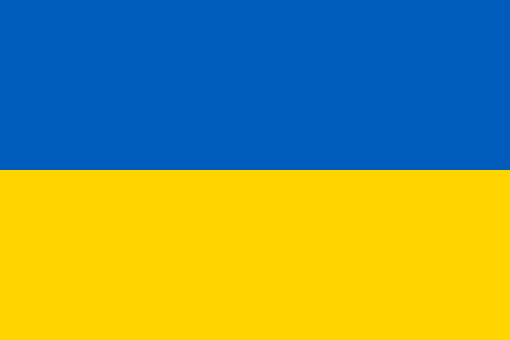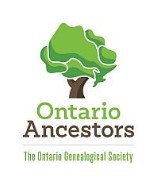Recently, by Pam Ayres
Yuletide R&R: Christmas Ghosts
Yuletide R&R
Thanks Gloria, Ken and Mike
While I usually have a longish list in “This Week’s Online Genealogy Events” to share, this week it’s quiet. Except.
Every Tuesday at 2:00 PM, Gloria Tubman, Ken McKinlay, and Mike More—three dedicated members of the OGS Ottawa Branch Council—offer their time and expertise to all. They alternate between online and at the Nepean Centrepointe Library, providing sage advice for family history researchers looking into Eastern Ontario, Western Quebec, and beyond.
This week, it’s the Ottawa Virtual Genealogy Drop-In.
Do you have a brick wall to break through? Or would you like to observe these experts in action? Their knowledge is something to behold. Join them this Tuesday, even if only to say “thank you” for their dedication to our community.
https://ottawa.ogs.on.ca/events/virtual-genealogy-drop-in-2-2025-12-23/
Yuletide R&R: Parking
Yuletide R&R: James Acaster
Sunday Sundries
Miscellaneous items I found interesting this week.
Five of the weirdest taxes in the world
As British as Fish and Chips
Dan Gardner’s antidote to rising ethno-nationalism?

Christmas Food Traditions
A four-page article in the latest edition of the Really Useful Bulletin from the Federation of Family History Societies.
Climate Change Scenarios for Britain
Scientists have laid bare the six deadly worst–case climate scenarios that could batter Britain by the end of the century. These are: Enhanced global warming, rapidly–reduced aerosols, volcanic eruption, stronger Arctic amplification, changes to ocean currents, and rising sea levels.
Thanks to the following individuals for their comments and tips: Ann Burns, Anonymous, Bryan Cook, Christine Jackson, Gail, Nick Mcdonald, Susan Smart, Teresa, and Unknown.

Findmypast Weekly Update
This week, FMP’s burial and baptism collections receive a boost with over 250,000 new records, plus more than 200,000 fresh newspaper pages.
Nottinghamshire Monumental Inscriptions
Years covered: 1317–2022
Records added: 151,459
The content depends on the inscription. A few also have images of the monument. About half are from Nottingham. From the work of the Nottinghamshire Family History Society.
Middlesex Baptisms, Harleian Society
Years covered: 1539–1837
Records added: 101,348
The total for all Middlesex Baptisms is now 656,651 records. About the Harleian Society.
Newspapers
FMP gets its newspapers from the sister site, the British Newspaper Archive. This week’s additions include four new titles. The earliest starts in 1826; most recent is 2004..
| Title | Date Range |
| Highland News and Football Times 16658 pages, new title | 1907-1917, 1920-1935, 1937-1938, 1940-1949 |
| Peterborough Evening Telegraph 43386 pages | 1988, 1990, 1998 |
| Montrose Review10220 pages | 2000-2004 |
| English Gentleman 794 pages, new title | 1826-1827 |
| Irish Ecclesiastical Gazette 9896 pages | 1888-1896 |
| Heckmondwike Herald 14594 pages | 1997-2002 |
| Yorkshire Evening Post 35742 pages | 1991-1992, 1998 |
| Croydon Review and Railway Time Table 7444 pages new, title | 1880-1883, 1885, 1887, 1889, 1891-1895 |
| Bicycling News 2944 pages, new title | 1886, 1893 |
| Midland Athlete 1852 pages | 1883, 1886 |
| Building News 3020 pages | 1892 |
| Southern Times and Dorset County Herald 3754 pages | 1921-1929 |
| Hunts Post 2148 pages | 1893-1896, 1898-1899 |
| Cannock Advertiser 12146 pages | 1894-1896, 1898-1899, 1910-1913, 1925-1950 |
| Voice of the People (Glasgow) 104 pages, new title | 1883 |
| Blaydon Courier 8770 pages | 1910-1913, 1930-1939, 1950-1955 |
| Football Echo (Sunderland)294 pages | 1950 |
| Lincolnshire Free Press 26220 pages | 1851, 1853-1854, 1856, 1858-1870, 1872-1873, 1882-1893, 1900-1907, 1915-1918, 1921-1929, 1934-1938, 1940-1942 |
| Athletic News 2030 pages | 1914-1920 |
Yuletide R&R: Yes Minister
To keep the blog active while family history news mostly takes a break, enjoy Yuletide R&R posts . Expect humourous and seasonal items, including classic favourites from previous years.
OGS 2026 Webinar Line-Up
 What does the Ontario Genealogical Society have scheduled for 2026 in its monthly webinar series?
What does the Ontario Genealogical Society have scheduled for 2026 in its monthly webinar series?
The program features a solid mix of topics ranging from genetic genealogy and AI, which sometimes seem like genealogical miracles, to specific record sets like the Upper Canada Sundries and Chelsea Pensioners.
Presentations are typically free and open to the public on the first Thursday of each month at 7:00 pm ET. Put a reminder in your calendar before you forget. Recordings available as a member benefit.
Here is the 2026 schedule:
-
January: Ken McKinlay – Genealogical Miracles
-
February: Marie Palmer – Investigative Genetic Genealogy: What Is It and How You Can Help
-
March: Janice Nickerson – Upper Canada Sundries – An underused genealogical gold mine
-
April: Daniel Horowitz – Old News, New Tricks: How AI Breathes Life into Newspaper Historic Headlines
-
May: Kathryn Lake Hogan – Discovering Industrial Ancestors in Mills, Logging Camps, and Company Towns
-
June: Eleanor Brinsko – Scrolling through Norwegian Genealogy Resources Online
-
July: Andrea Lister – Permissions Made Simple: Copyright for Family Historians
-
August: Natalie Bodle – The Top 5 Websites You Need to Know About
-
September: Lianne Kruger – FNMI: The Indigenous Peoples of Canada
-
October: Kate Penney Howard – Home Children and Orphan Trains: North American Child Migration Schemes of the 19th & 20th Centuries
-
November: Linda Corupe – Chelsea Pensioners in Upper Canada
-
December: Eleanor Brinsko – How Religion in Norway Affected Our Ancestors
For more details or to register for upcoming sessions, visit the OGS website.
TheGenealogist: Free Trial and Expansion of Early Marriage Records Across England
![]()
For blog visitors, I’ve arranged a 30-day free trial to TheGenealogist. In addition to the resources you’d expect, it has unique resources, such as the Lloyd George Domesday Survey, that you won’t find on more high-profile sites. It also provides enhanced capabilities. I recently used their occupation indexing on a census to better understand the community where an ancestral family lived. Why not give it a free trial?
TheGenealogist has just released 100,000 new early marriage entries from seven counties and national ecclesiastical sources. For the 16th to 19th centuries, the update helps researchers trace couples and family connections in periods and places where parish registers can be incomplete, damaged, or missing.
Newly released record sets include:
● London & National – Marriage Licences at the Faculty Office (1543–1869)
● Durham Marriage Bonds (1664–1674)
● Lancaster Marriage Bonds (1734–1738)
● Leicestershire Marriage Licences (1570–1729)
● Somerset – Bishops of Bath and Wells Marriage Allegation Bonds (1670-1755)
● Surrey Marriage Licences (1673–1770)
● Sussex Marriage Licences, Deaneries of Chichester, Pagham and Terring (1582–1730)
AI: The Future for Family History
A reminder for those with a Legacy Family Tree Webinars subscription of the end-of-year webinar, The Best Uses of AI for Genealogists, by Steve Little and Mark Thompson. It’s on Friday at 2 pm ET.
Here are two items AI enthusiasts may also want to review.
The first, the video of the NGS event “Navigating the AI Frontier”, now freely available on the NGS YouTube page.
Also, the latest episode of the Family History AI Show. Episode 39 examines fourteen key trends shaping the future of family history AI. Toward the end, they address AI Licensing Deals and How They Change Internet Access Patterns.
That set me wondering: will that extend to AI companies funding the digitization of the 95% of material in archives that isn’t digitized? When will robotics reach the stage of safely retrieving hard-copy materials, some of them fragile, digitizing them, and having AI evaluate them against criteria to ensure privacy embargoes are respected?
Here, unedited, is Gemini’s response to my query.
The shift toward AI licensing deals is creating a “data rush” that is fundamentally changing how archives are viewed. Where physical records were once seen as a liability or a storage cost, they are now being revalued as high-quality, “clean” training sets for Large Language Models (LLMs).
Will AI Companies Fund Massive Digitization?
The short answer is yes, but selectively. While 95% of archival material remains undigitized, AI companies are primarily interested in “high-signal” data—records that are dense with human knowledge, historical context, or unique languages.
-
Targeted Partnerships: We are already seeing “Generative AI Innovation Funds” (like AWS’s $1 million grant to digitize the Jane Goodall Institute’s archives) where tech giants foot the bill to turn handwritten notes and analog media into AI-ready data.1
-
The “Clean Data” Premium: As the internet becomes saturated with AI-generated content, “pristine” historical records (government records, census data, and old newspapers) become more valuable. Licensing deals, such as those being tracked by Ithaka S+R, suggest that archives can use these funds to cover the high costs of digitization.
-
The 95% Challenge: The hurdle remains the sheer volume. Tech companies will likely fund collections with the broadest utility first (e.g., national archives or major genealogical databases) before moving into niche local histories.
The Rise of Archival Robotics
The technology to safely handle “cold” hardcopy is advancing through a combination of industrial automation and specialized suction-based systems.
| Development Stage | Technology Status (2025) | Capabilities |
| Fragile Handling | In Pilot/Active Use | Systems like the University of Innsbruck’s robotic scanners use “air knives” and vacuum suckers to turn pages of 100-year-old fragile documents without human contact. |
| High-Volume Digitization | Mature | Companies like Ripcord use AI-powered robots to remove staples and fasteners 10x faster than humans, processing up to 1 billion pages annually. |
| Complex Media | Developing | Robots are now learning to handle non-standard items like glued cards, folded maps, and varying paper weights using 3D vision and ultrasonic sensors. |
AI Evaluation of Privacy Embargoes
Automated privacy adherence is arguably the most advanced part of the pipeline. The National Archives and Records Administration (NARA) is already piloting AI systems to handle this specific bottleneck.
1. PII Detection and Redaction
AI models are now used to scan digitized text for Personally Identifiable Information (PII). Instead of a human reading every line, the AI flags names, addresses, and social security numbers, applying redactions automatically based on the age of the record (e.g., the “72-year rule” in the US).
2. Declassification and Embargo Logic
AI is being trained on “declassification guides”—complex sets of rules that determine if a document is still sensitive. This allows archives to move beyond “blanket” embargoes (where everything is hidden for 70 years) to a more surgical approach where safe parts of a collection can be released sooner.
3. Ethical AI Governance
A major trend in late 2025 is the “Human in the Loop” (HITL) model. AI performs the first 99% of the heavy lifting—transcription, entity extraction, and privacy flagging—while professional archivists act as “quality controllers” for the 1% of ambiguous cases.
.

